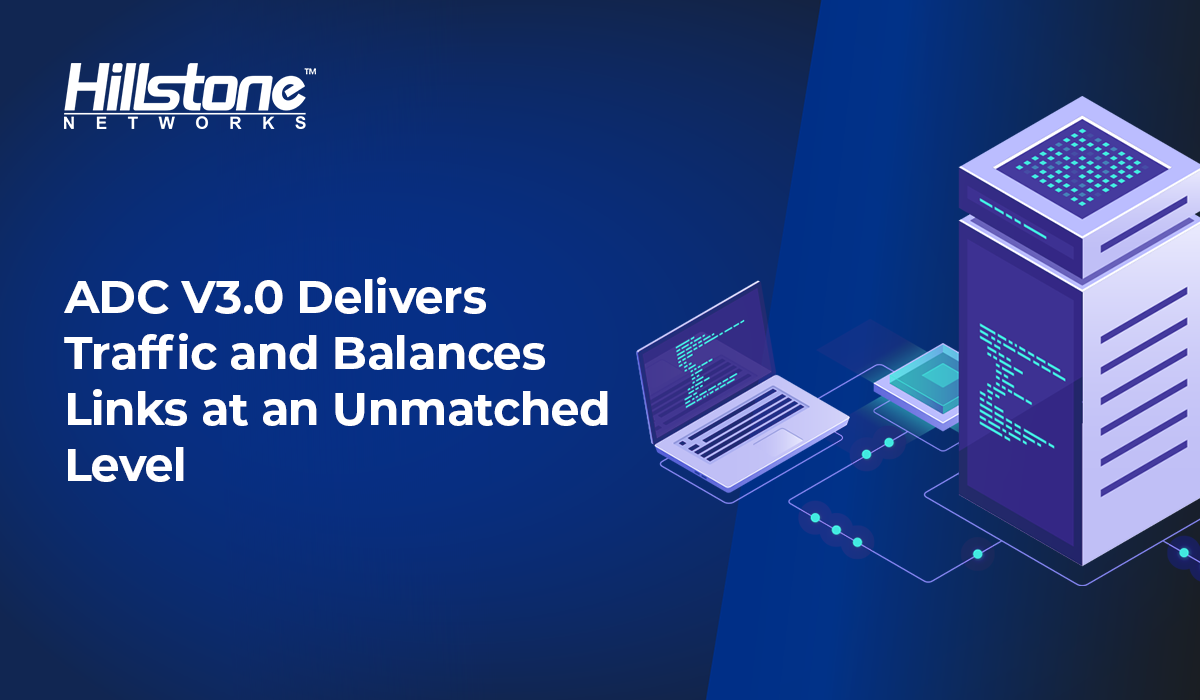The first-generation application delivery controllers (ADC) mainly dealt with application acceleration and load balancing between servers. The latest ADCs, such as Hillstone’s AX series, are endowed with more comprehensive functions, such as rate shaping, SSL offloading, and sometimes as a Web Application Firewall located in the perimeter of the network.
Hillstone Networks is pleased to announce the release of ADC version 3.0. As a future-facing ADC product, the AX series has constantly challenged the boundaries of innovation. On the hardware side, V3.0 introduced seven new hardware models with a wide range of throughput which can meet the needs of different business scales; on the software side, V3.0 has made a series of optimization in terms of traffic transmission, offloading, distribution, etc., which makes ADC better adapt to the complex and changeable network environment.
New models
Hardware refreshes are frequently needed to adapt to innovations in technology. Hillstone’s new hardware models (AX120S, AX220S, AX320S, AX550S, AX1200S, AX2200S, and AX3200S) make the AX series viable for years to come at a superior performance with an lower TCO. With high-performance general-purpose architecture processors, the new hardware models provide extreme network throughput, covering 3 Gbps to 35 Gbps and 70 Gbps to 95 Gbps L4 throughput; with the hardware acceleration engine, they further accelerate the decryption of SSL traffic, which based on pure software in the previous version; in the design of ports and racks, the hardware models also aim to be closely arranged and environment friendly (up to 16 SFP+ ports, 2 QSFP+ ports and 1RU form factor), meeting customer needs as well as saving operations and maintenance cost with minimum feasible resources.
TCP unilateral acceleration
Whether network resources (such as bandwidth, cache size, etc.) can be efficiently utilized is primarily determined by the congestion algorithm. ADC software optimizes the commonly used congestion algorithms to help it cope with network of different load sizes effectively (in the optimizing test, data transmission rate from the server to the client is increased by 30%), for which users can access applications and services smoother.
Traffic offloading and mirroring
Offloading traffic can improve resource utilization and free up the CPU to focus on more critical tasks, but is the offloaded traffic secure? What actions are being followed to ensure it is safe? ADC software notices this potential crisis — by working with other devices, it mirrors the SSL traffic for further checks after offloading, which consolidates the defense capability against threats without changing the original network.
SLB supports Radius
As the most widely used IETF standard AAA protocol, Radius provides centralized authentication and account storage functions for network connection access. For SLB, which is responsible for identifying and distributing business loads, the proportion of loads under this protocol cannot be ignored. In ADC, SLB for the Radius protocol is added, which brings higher availability.
Read/write splitting of MYSQL
For ADC and most systems’ databases, the frequency of reading operations is much greater than that of writing operations (just the opposite in time), so it is essential to separate them. Based on the deployment of one-primary & multiple-replicas, ADC software realizes the read/write splitting of MYSQL, which improves database efficiency significantly.
LLB supports IPv6
Due to the need for more abundant address space, the transition from IPv4 to IPv6 has gradually become a popular trend. For LLB, which is responsible for distributing traffic according to the specified routing or scheduling algorithm, it is critical to have the ability to handle v6 traffic. In ADC, LLB for IPv6 is added, paving the way for its extensive application scenarios.
Operation and maintenance management
Excellent O&M management can make the coordination between various components in the system more efficient. Therefore, two changes in management have been made this time. On the one hand, ADC software supports RESTful API, which is more convenient for third-party integration with higher interoperability; on the other hand, it supports Ansible, providing the ADC with robust management capability in an automated and modular way.
Hillstone’s ADCs combine high-performance throughput, comprehensive load balancing, effective monitoring and prevention, and easy scaling capabilities. When used in tandem with Hillstone’s other security products, ADCs could provide a full range of protection for organizations.
For more information, contact your Hillstone representative or authorized reseller.



